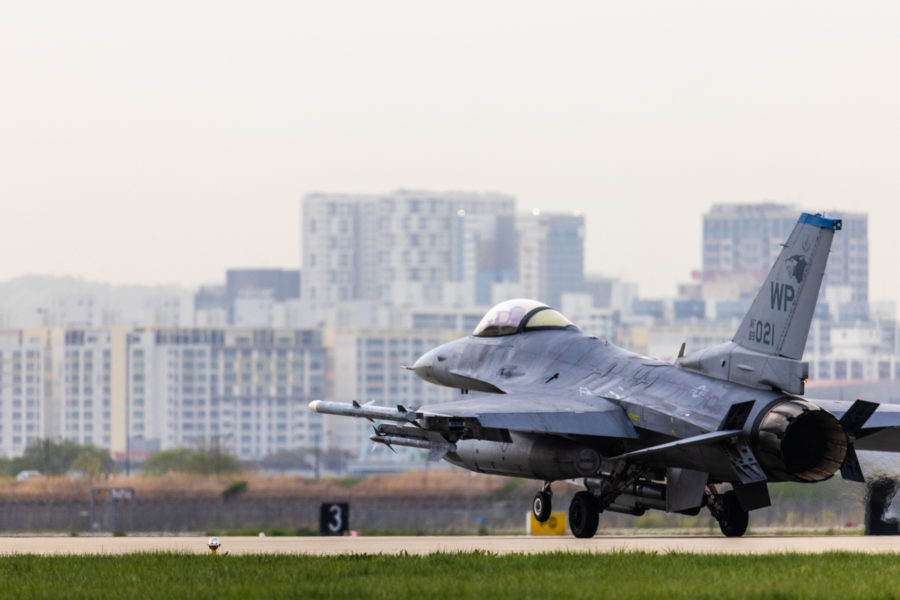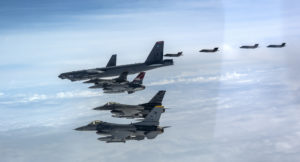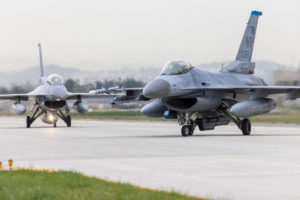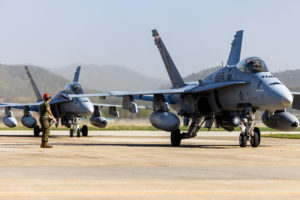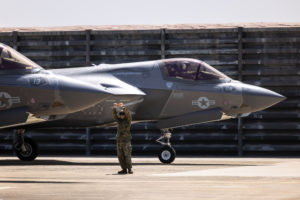The U.S. and South Korea began another round of air drills April 17—days after U.S. Air Force B-52 bombers flew over the Korean Peninsula as the two countries follow through on their pledge to conduct more joint air exercises.
The latest exercise, dubbed Korea Flying Training, kicked off at Gwangju Air Base, according to the South Korean Ministry of Defense. Japanese and Korean news agencies reported approximately 110 aircraft will be participating in the drills, which will last until April 28.
Images released by the 8th Fighter Wing at Kunsan Air Base, South Korea, show U.S. Air Force F-16s and U.S. Marine Corps F-35s and F/A-18s arriving at the base on April 13 and 14.
Also on April 14, a pair of USAF B-52s flew alongside American F-16s and South Korean F-35s over the Republic of Korea.
“The training offered the alliance its latest opportunity to further strengthen its interoperability by demonstrating a combined defense capability and providing extended deterrence in the defense of the Korean Peninsula,” Pacific Air Forces said in a statement.
B-52s are in the region as part of a Bomber Task Force deployment to Andersen Air Force Base, Guam that began a few weeks ago.
Korea Flying Training comes a little more than five months after the joint air exercise Vigilant Storm, which mostly took place in November 2022. Those drills included about 1,600 sorties and 240 aircraft—roughly 100 of them USAF planes.
In early January, Secretary of Defense Lloyd J. Austin III said during a visit the U.S. would step up its military exercises with South Korea to include expanded use of air assets such as fifth-generation fighters and strategic bombers.
Since then, B-1s have flown with South Korean fighters four times, and B-52s have now done so twice.
The step-up in exercises and training has drawn a sharp response from North Korea, which has tested a range of missiles, including ICBMs, in recent months. North Korean leader Kim Jong-un has embarked on an ambitious missile program that saw a record number of tests in 2022. Tensions have continued to build on the Korean Peninsula, leading some South Korean politicians to publicly speculate about developing or hosting nuclear weapons in the country, something that hasn’t happened since 1991. In addition to the air drills, South Korea, Japan, and the U.S. held joint missile defense exercises on April 17.
